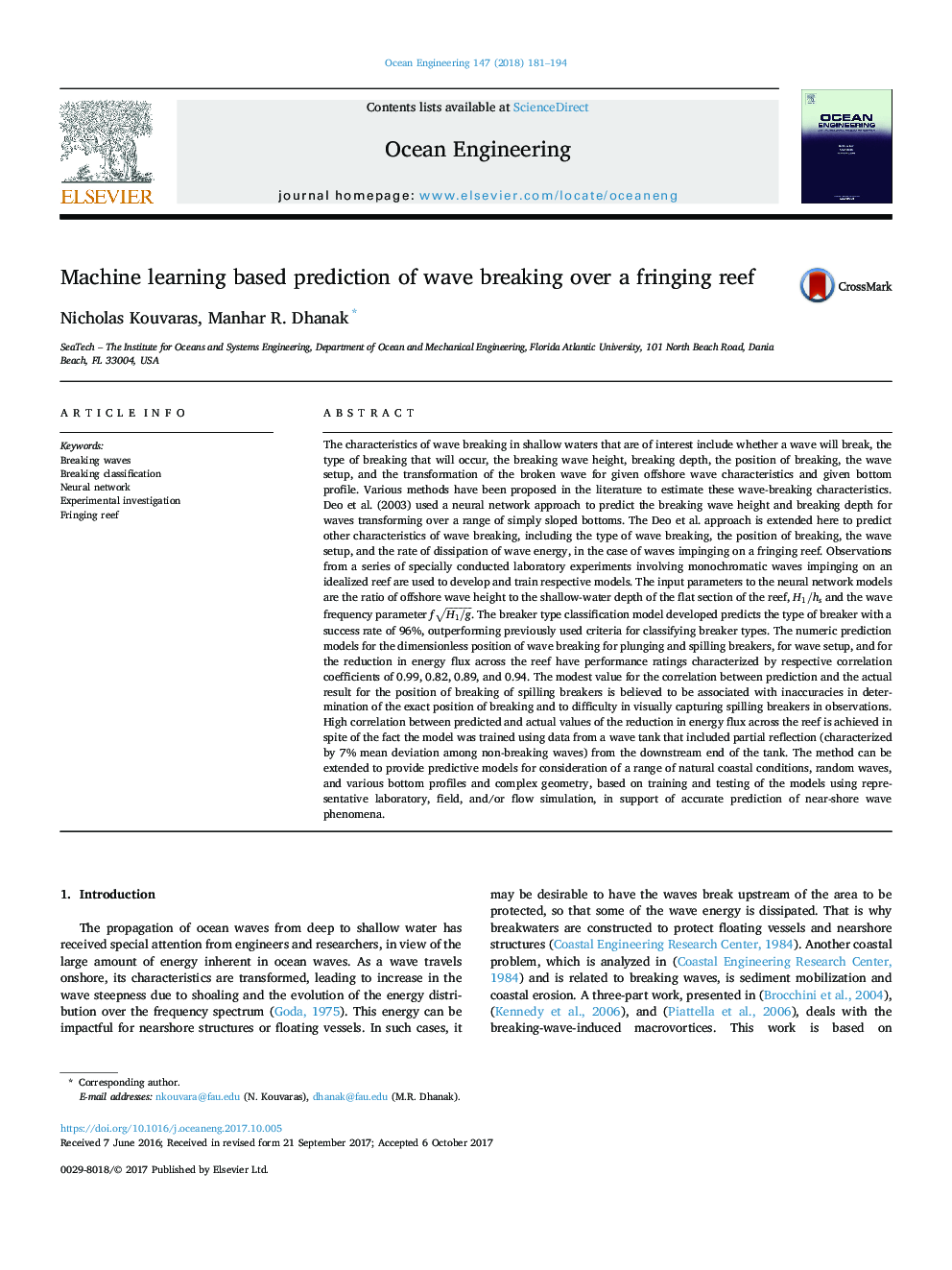| کد مقاله | کد نشریه | سال انتشار | مقاله انگلیسی | نسخه تمام متن |
|---|---|---|---|---|
| 8063629 | 1520643 | 2018 | 14 صفحه PDF | دانلود رایگان |
عنوان انگلیسی مقاله ISI
Machine learning based prediction of wave breaking over a fringing reef
ترجمه فارسی عنوان
پیش بینی ماشین بر مبنای یادگیری از شکست موج بر یک صخره مرزی
دانلود مقاله + سفارش ترجمه
دانلود مقاله ISI انگلیسی
رایگان برای ایرانیان
کلمات کلیدی
شکستن امواج، شکستن طبقه بندی، شبکه عصبی، تحقیقات تجربی، صخره نوردی،
موضوعات مرتبط
مهندسی و علوم پایه
سایر رشته های مهندسی
مهندسی دریا (اقیانوس)
چکیده انگلیسی
The characteristics of wave breaking in shallow waters that are of interest include whether a wave will break, the type of breaking that will occur, the breaking wave height, breaking depth, the position of breaking, the wave setup, and the transformation of the broken wave for given offshore wave characteristics and given bottom profile. Various methods have been proposed in the literature to estimate these wave-breaking characteristics. Deo et al. (2003) used a neural network approach to predict the breaking wave height and breaking depth for waves transforming over a range of simply sloped bottoms. The Deo et al. approach is extended here to predict other characteristics of wave breaking, including the type of wave breaking, the position of breaking, the wave setup, and the rate of dissipation of wave energy, in the case of waves impinging on a fringing reef. Observations from a series of specially conducted laboratory experiments involving monochromatic waves impinging on an idealized reef are used to develop and train respective models. The input parameters to the neural network models are the ratio of offshore wave height to the shallow-water depth of the flat section of the reef, H1/hs and the wave frequency parameter fH1/g. The breaker type classification model developed predicts the type of breaker with a success rate of 96%, outperforming previously used criteria for classifying breaker types. The numeric prediction models for the dimensionless position of wave breaking for plunging and spilling breakers, for wave setup, and for the reduction in energy flux across the reef have performance ratings characterized by respective correlation coefficients of 0.99, 0.82, 0.89, and 0.94. The modest value for the correlation between prediction and the actual result for the position of breaking of spilling breakers is believed to be associated with inaccuracies in determination of the exact position of breaking and to difficulty in visually capturing spilling breakers in observations. High correlation between predicted and actual values of the reduction in energy flux across the reef is achieved in spite of the fact the model was trained using data from a wave tank that included partial reflection (characterized by 7% mean deviation among non-breaking waves) from the downstream end of the tank. The method can be extended to provide predictive models for consideration of a range of natural coastal conditions, random waves, and various bottom profiles and complex geometry, based on training and testing of the models using representative laboratory, field, and/or flow simulation, in support of accurate prediction of near-shore wave phenomena.
ناشر
Database: Elsevier - ScienceDirect (ساینس دایرکت)
Journal: Ocean Engineering - Volume 147, 1 January 2018, Pages 181-194
Journal: Ocean Engineering - Volume 147, 1 January 2018, Pages 181-194
نویسندگان
Nicholas Kouvaras, Manhar R. Dhanak,
